Authors: PJ Liesch, UW-Madison Entomology
Last Revised: 02/19/2001
X-number: XHT1128
Fungus gnats (Family Sciaridae) belong to the insect order Diptera which contains flies, gnats, mosquitoes, and midges. These insects only have one pair of wings and undergo a complete metamorphosis. Fungus gnats are considered a cosmetic problem in most situations, but larval feeding on plant roots has been associated with root rots in greenhouse settings. Adult fungus gnats are weak fliers and are often seen at rest on the surface of growth media of potted plants. Shore flies (Scatella stagnalis) are another nuisance insect and are often confused with fungus gnats in the greenhouse. Unlike fungus gnats, shore flies feed on algae. They are a problem in greenhouses with excess water on or beneath benches, on walkways, or on greenhouse sidewalls.
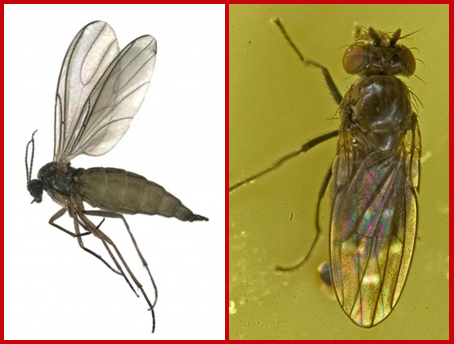
Appearance: Adult fungus gnats are delicate, dark brown or black flies that are approximately 1/8 inch long. Fungus gnat larvae are slender maggots that are 1/4 inch long when fully grown. These larvae are whitish or translucent with a black head.
Shore flies are more robust than fungus gnats and resemble fruit flies. Unlike fungus gnats, shore flies are very strong fliers. On close inspection of their dark wings, you will see five light spots. Shore fly larvae are opaque and lack the distinct dark head typical of fungus gnat larvae. Both the larvae and pupae of shore flies have a pair of breathing tubes on their hind ends.
Symptoms and Effects: Fungus gnat larvae feed on decaying organic matter and fungi in growth media. If populations reach high levels, they may damage roots by feeding on root hairs or tunneling into the roots themselves. Larvae primarily damage seedlings and cuttings that have not produced callus tissue. However, larvae can also damage larger plants of certain plant species (e.g., begonias, carnations, geraniums, poinsettias). The wounds produced by fungus gnat larvae can provide an entry point for root rot organisms. Adult fungus gnats can reduce the aesthetic appearance of plants by leaving fecal droppings (flyspecks) on plants and pots and can also cause contamination of leaves and flowers of edible and medicinal plants.
Shore flies are primarily a nuisance in greenhouses. The only “damage” they cause is flyspeck, which causes issues similar to those caused by fungus gnat flyspeck.
Life Cycle: Fungus gnats produce several generations per year, with adult females laying up to 200 eggs in clusters on the surface of moist growth media. The larvae go through four growth stages (instars) over the course of a one to two-week period before they pupate in growth media. After pupating approximately one week, adult fungus gnats emerge.
Shore flies lay their eggs scattered on algae or moist growth media. The eggs hatch in two to three days, and larvae feed for about one week on algae just beneath the surface of growth media before entering their pupal stage. Adult shore flies emerge from the pupae after four to five days.
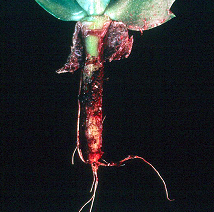
Scouting Suggestions: Monitor for fungus gnat adults using yellow sticky traps placed just above the crop canopy. Use blue sticky traps to monitor for shore flies. Use 10 traps per 1000 square feet. To monitor for both fungus gnat and shore fly larvae in growth media, place potato disks on the media surface. Check for larvae after three to four days. If there are larvae in a container, they will come to the surface to feed on the potato tissue where you can easily count them. Use ten potato disks per 10,000 square feet of production area, and replace the disks every two weeks.
Control, Non-Chemical: Eliminate breeding areas such as infested growth media and plant debris. Avoid overwatering plants to reduce the amount of fungi and algae growing in containers. DO NOT overfertilize, as that will promote fungal and algal growth. If you consistently have problems with fungus gnats and shore flies, you may want to reconsider your growth media and choose one that has less organic matter.
Control, Biological: For information on biological control of fungus gnats and shore flies, refer to North Central Regional Publication 581, Biological Control of Insects and Other Pests of Greenhouse Crops. There are several insect growth regulators, as well as Bacillus thuringiensis subsp. israeliensis (Bti), that can be used to control fungus gnats without disrupting any natural enemies that may be present in a greenhouse.
Control, Chemical: There are several insecticides (e.g., cyromazine, diflubenzuron) available for control of fungus gnats and shore flies. Apply these products as a drench to containers according to label directions. Each insecticide will differ in its potential impacts on beneficial biocontrol agents, so keep this in mind when selecting a product. Also, be cautious when using soil drench insecticides, as some formulations can damage roots.
Download Article





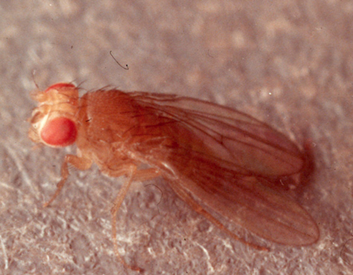 Fruit Flies in the Home
Fruit Flies in the Home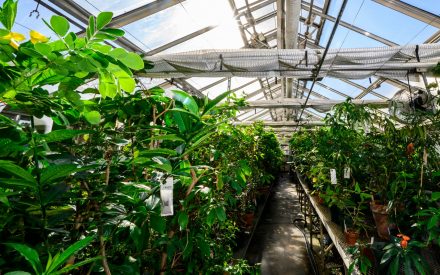 Managing Thrips in Greenhouses
Managing Thrips in Greenhouses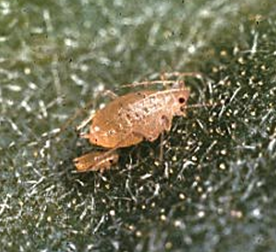 Managing Aphids in Greenhouses
Managing Aphids in Greenhouses Managing Mites in Greenhouses
Managing Mites in Greenhouses


